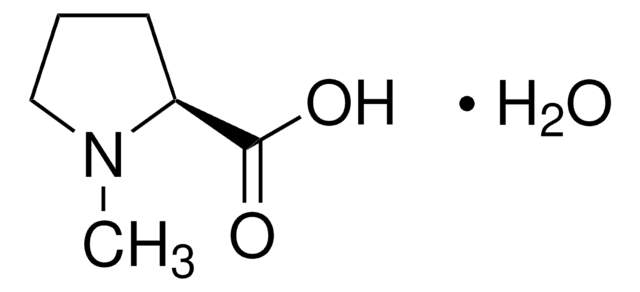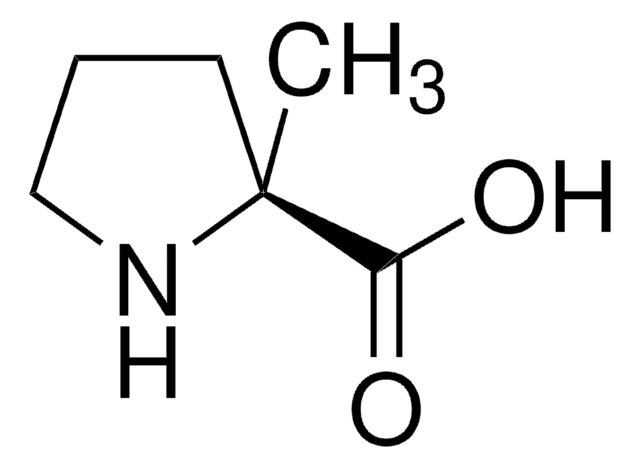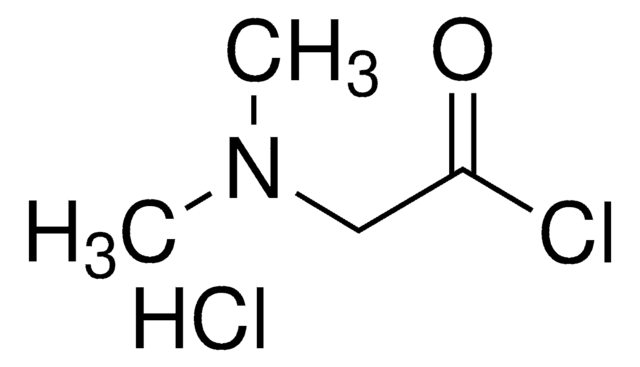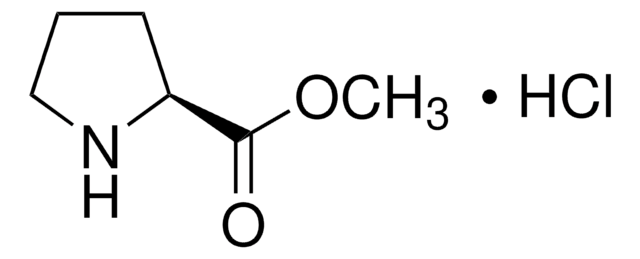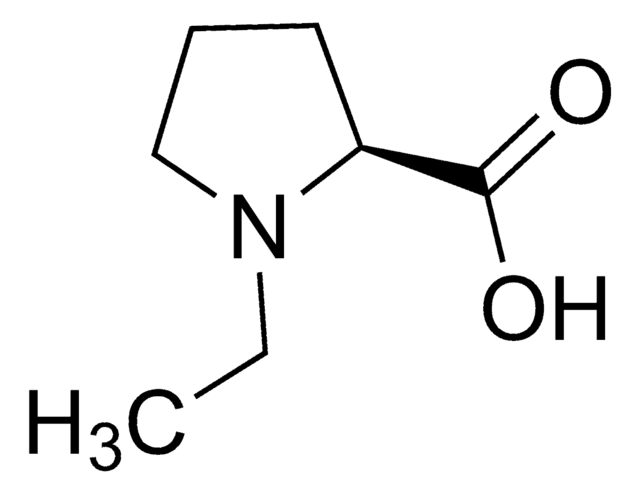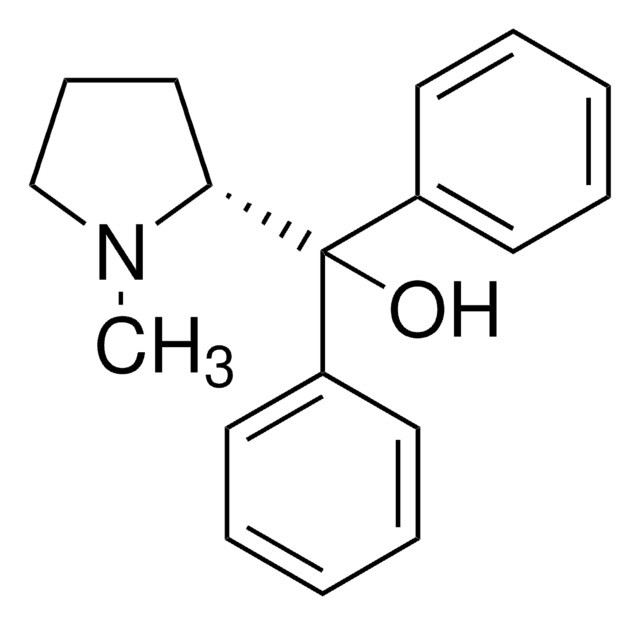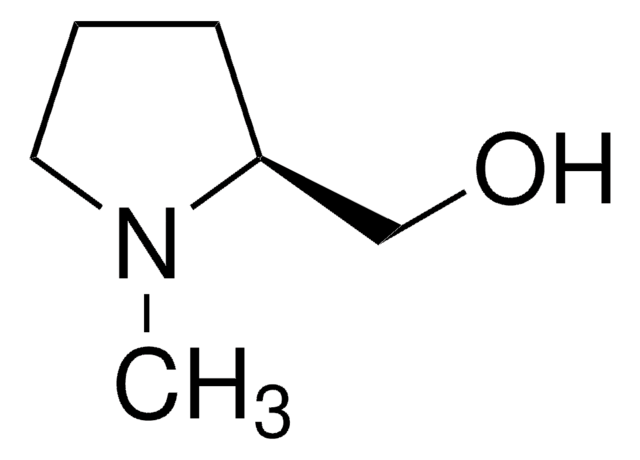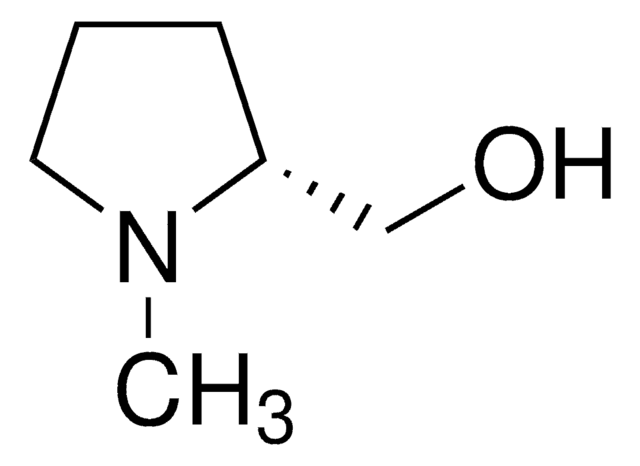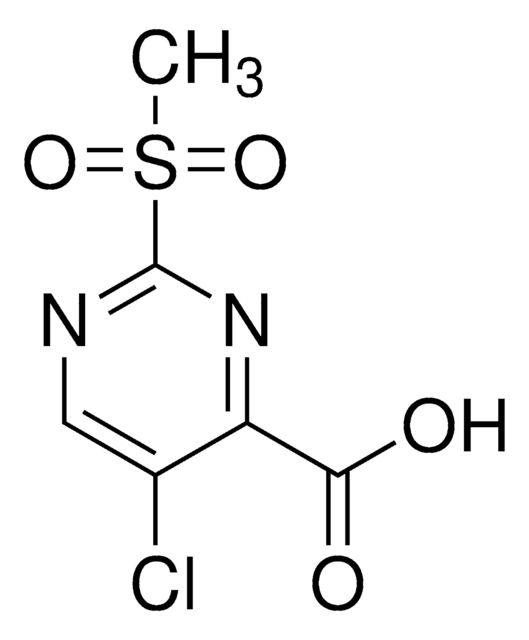All Photos(1)
About This Item
Empirical Formula (Hill Notation):
C6H11NO2
CAS Number:
Molecular Weight:
129.16
MDL number:
UNSPSC Code:
12352200
PubChem Substance ID:
NACRES:
NA.26
Recommended Products
Assay
≥99.0% (TLC)
form
powder
color
white to off-white
mp
114-116 °C
storage temp.
−20°C
SMILES string
CN1[C@H](C(O)=O)CCC1
InChI
1S/C6H11NO2/c1-7-4-2-3-5(7)6(8)9/h5H,2-4H2,1H3,(H,8,9)/t5-/m0/s1
InChI key
CWLQUGTUXBXTLF-YFKPBYRVSA-N
Biochem/physiol Actions
N-Methyl-L-proline is a proline analogue present in citrus fruits.
Storage Class Code
13 - Non Combustible Solids
WGK
WGK 3
Flash Point(F)
Not applicable
Flash Point(C)
Not applicable
Choose from one of the most recent versions:
Already Own This Product?
Find documentation for the products that you have recently purchased in the Document Library.
Luigi Servillo et al.
Journal of agricultural and food chemistry, 59(1), 274-281 (2010-12-07)
The content of proline and various compounds deriving from its metabolism (4-hydroxy-L-proline, N-methyl-L-proline, N,N-dimethylproline, and 4-hydroxy-L-prolinebetaine) was determined in fruits and seeds of Bergamot (Citrus bergamia Risso et Poit), growing in the Calabria region (South Italy). A HPLC-ESI-tandem mass spectrometry
Domenico Cautela et al.
Journal of the science of food and agriculture, 101(3), 981-988 (2020-08-08)
The so-called 'Neapolitan limmo' or 'lemoncetta Locrese' is an old and now rare Mediterranean sweet lime, similar to lemon but smaller. It is a fruit distinguished from orange, lemon, mandarin, and lime for its sweeter, watery, and non-acidic taste, with
Luigi Servillo et al.
Food chemistry, 205, 52-57 (2016-03-24)
The occurrence of pipecolic acid betaine (homostachydrine) and its biosynthetic precursor N-methylpipecolic acid was detected for the first time in green coffee beans of Robusta and Arabica species. The analyses were conducted by HPLC-ESI tandem mass spectrometry and the metabolites
Quan He et al.
Food research international (Ottawa, Ont.), 106, 446-457 (2018-03-28)
Xiebai is an edible Chinese herb with various health and therapeutic benefits. To evaluate its nutritional and health values, the free amino acids and derivatives of its two botanical origins (i.e., Allium chinense G. Don and Allium macrostemon Bunge) were
Our team of scientists has experience in all areas of research including Life Science, Material Science, Chemical Synthesis, Chromatography, Analytical and many others.
Contact Technical Service